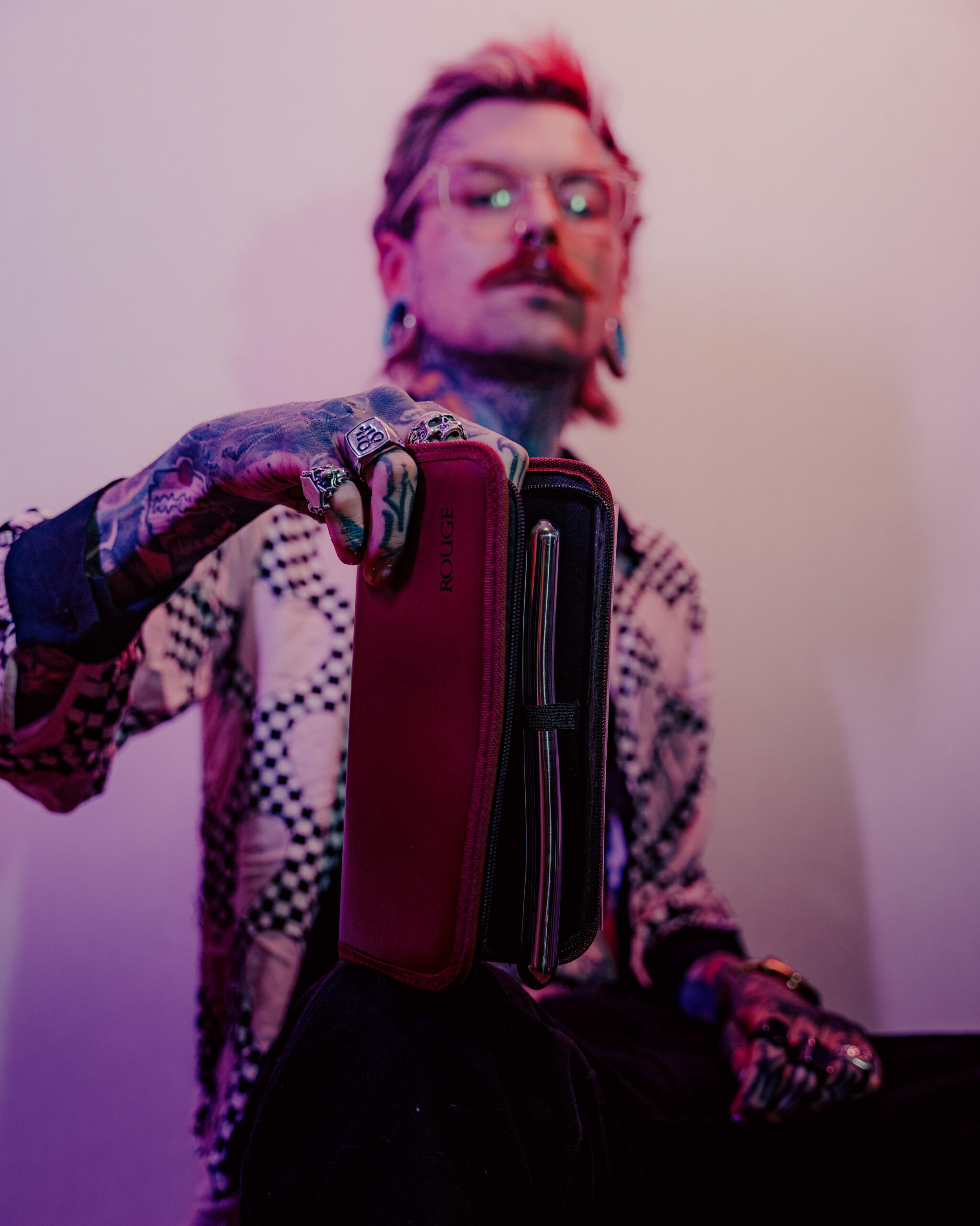Defining Pansexuality
Pansexuality is a sexual orientation characterized by romantic, emotional, and/or sexual attraction to people regardless of their gender identity or expression.
The term “pansexual” derives from the Greek words “pan,” meaning “all,” and “sexual.” It emphasizes that pansexual individuals are open to forming connections with anyone they find appealing, irrespective of their assigned sex at birth, how they present themselves, or the labels they use to identify.
It’s important to understand that pansexuality is distinct from bisexuality. While both orientations involve attraction to more than one gender, pansexuality extends beyond the binary of male and female. Pansexual individuals are attracted to people across the entire spectrum of gender identities, including but not limited to:
- Cisgender
- Transgender
- Non-binary
- Genderfluid
- Agender
Pansexuality emphasizes attraction to the person as a whole, rather than focusing on specific gender characteristics.
Here are some key points to remember when understanding pansexuality:
1.
Gender is not the primary factor in pansexual attraction.
2.
Pansexuality is a valid and diverse sexual orientation.
3.
It’s crucial to use respectful and accurate language when discussing pansexuality.
4.
Individuals may identify as pansexual for different reasons, based on their personal experiences and understanding of themselves.
By acknowledging and respecting the fluidity and diversity of gender identities, we create a more inclusive and understanding society for all.
Pansexuality is a sexual orientation characterized by romantic and/or sexual attraction to people regardless of their gender identity or expression.
The term “pan” derives from the Greek word “pan,” meaning “all,” encompassing a broad spectrum of genders. This means pansexual individuals are attracted to men, women, transgender, non-binary, and genderfluid individuals, among others.
It’s essential to differentiate pansexuality from bisexuality. While both orientations involve attraction to more than one gender, bisexuality traditionally refers to attraction to two genders (often understood as male and female). Pansexuality, on the other hand, extends beyond this binary, embracing attraction to all genders.
Pansexuality recognizes that gender is a complex and fluid concept. It acknowledges that people exist along a spectrum of gender identities and expressions, rather than being confined to strict categories.
For pansexual individuals, gender does not play a significant role in their attraction to another person. What matters most are qualities like personality, shared interests, emotional connection, and physical attraction.
Understanding and embracing pansexuality involves challenging societal norms and expectations around gender and sexuality. It promotes inclusivity and acceptance of all individuals, regardless of their gender identity or expression.
It’s crucial to create safe and affirming spaces for pansexual people where they can be open about their identities and experiences without fear of judgment or discrimination.
Navigating Societal Perceptions
Navigating societal perceptions and challenging assumptions is a crucial aspect of living authentically as a pansexual individual. Pansexuality, an orientation characterized by romantic and sexual attraction to people regardless of their gender identity or expression, often encounters misunderstanding and prejudice rooted in societal norms.
Here are some strategies for navigating these challenges:
-
Education is Key:
Providing accurate information about pansexuality to yourself and others can help dismantle misconceptions. Explain that pansexuality encompasses attraction to all genders, not just a specific combination or exclusion of them.
-
Reframing Language:
Be mindful of the language used when discussing pansexuality. Avoid perpetuating harmful stereotypes or using terms that are exclusive or demeaning to other gender identities. Instead, opt for inclusive and respectful language that reflects the diverse experiences within the pansexual community.
-
Visibility Matters:
Increasing visibility of pansexual individuals in media, literature, and everyday life can help normalize the orientation and challenge societal assumptions. Sharing personal stories, attending LGBTQ+ events, and advocating for inclusive representation can all contribute to creating a more accepting environment.
-
Building Community:
Connecting with other pansexual individuals through online forums, support groups, or local organizations can provide a sense of belonging and shared understanding. Sharing experiences, offering support, and celebrating each other’s journeys can be empowering and validating.
-
Self-Care is Essential:
Navigating societal perceptions can be emotionally challenging. Prioritizing self-care practices such as mindfulness, exercise, creative expression, and spending time with loved ones can help manage stress and maintain well-being.
Remember that challenging assumptions and advocating for acceptance is an ongoing process. By educating ourselves, others, and engaging in open conversations, we can create a more inclusive and understanding society for all individuals, regardless of their sexual orientation or gender identity.

Navigating societal perceptions can be a complex and challenging experience for individuals who identify as pansexual.
Pansexuality, defined as sexual, romantic, or emotional attraction to people regardless of their gender identity or expression, often encounters misunderstanding and prejudice.
It’s crucial for pansexual hollow anal plug individuals to understand that societal perceptions are often shaped by cultural norms, biases, and limited understanding of diverse identities.
**Finding Community** is vital for building support networks and fostering a sense of belonging.
Online platforms and social media groups dedicated to the LGBTQ+ community can provide safe spaces for connection and shared experiences.

Local LGBTQ+ organizations often offer support groups, social events, and resources tailored to the needs of pansexual individuals.
Building **Authentic Relationships** is essential for emotional well-being.
Open and honest communication with partners about attractions, boundaries, and expectations can help create fulfilling relationships based on mutual understanding and respect.
Surrounding oneself with supportive friends and family who celebrate diversity and accept pansexuality can provide a strong foundation of love and acceptance.
**Self-Acceptance** is a fundamental step in navigating societal perceptions.
Embracing one’s pansexual identity as a natural and valid part of who they are empowers individuals to live authentically and confidently.
Educating oneself about pansexuality and dispelling myths can help combat internalized homophobia or biphobia.

**Advocacy** plays a role in promoting understanding and acceptance of pansexuality within society.
Speaking out against discrimination, educating others about pansexuality, and supporting organizations that advocate for LGBTQ+ rights can contribute to creating a more inclusive world.
Understanding Attraction: A Spectrum, Not a Box
Attraction is a complex and multifaceted experience that defies easy categorization. Rather than fitting neatly into boxes, human attraction exists on a spectrum, with individuals experiencing diverse combinations and intensities of desire.
Pansexuality, often defined as being attracted to people regardless of their gender identity or expression, exemplifies this fluidity. It’s important to understand that pansexuality doesn’t imply an equal attraction to everyone; attraction is inherently subjective and varies greatly from person to person.
For some, pansexual attraction might manifest primarily in romantic desire, while others might experience a stronger pull towards platonic connections or sexual attraction. The nuances of these feelings can be incredibly personal and unique to each individual’s journey.
Moreover, attraction isn’t static; it can evolve and shift over time. What initially sparks interest might fade, while new forms of attraction can emerge. Recognizing this dynamism allows for greater understanding and acceptance of the ever-changing nature of desire.
Furthermore, societal norms and cultural influences play a significant role in shaping our understanding of attraction. Traditional binary concepts of gender often limit our perception, failing to encompass the full spectrum of human experience. Embracing fluidity and challenging rigid definitions empowers individuals to explore their own attractions authentically.
Ultimately, understanding attraction requires moving beyond labels and recognizing its inherent complexity. It’s a journey of self-discovery, acceptance, and celebrating the diverse ways in which humans connect with each other.
Attraction isn’t a simple binary switch – it’s a vast and complex spectrum. We tend to categorize things neatly, but human experiences rarely fit into boxes. Attraction encompasses a wide range of emotions, physical desires, intellectual connections, and even spiritual affinities.
Think about the people you find attractive. Are they all similar in appearance? Do they all share specific interests or values? Likely not. Our attractions are influenced by a multitude of factors: personality, sense of humor, shared experiences, cultural background, and yes, physical attributes.
Furthermore, attraction is fluid and evolves over time. What captivated us as teenagers may no longer hold the same sway in our twenties or thirties. Our understanding of ourselves and what we find appealing deepens and shifts as we grow, learn, and experience new things.
The concept of pansexuality, which encompasses attraction to people regardless of their gender identity or expression, highlights this fluidity. It recognizes that attraction can extend beyond traditional labels and limitations.
It’s important to remember that there is no “right” way to experience attraction. Some people may be exclusively attracted to one gender or another, while others may experience a broader range of attractions. Some may feel their attractions shift over time, and others may find consistency in their preferences.
Understanding attraction as a spectrum rather than a rigid set of rules allows us to embrace the diversity of human experiences and celebrate the complexity of what makes us feel drawn to others.
Read this to go deeper
Read everything written here
- Skin Treatment & Skincare Consultations Near Pyrford, Surrey - December 5, 2025
- Skin Pen Microneedling Near Wallington, Surrey - December 3, 2025
- Skin Pen Microneedling Near Godalming, Surrey - November 30, 2025
